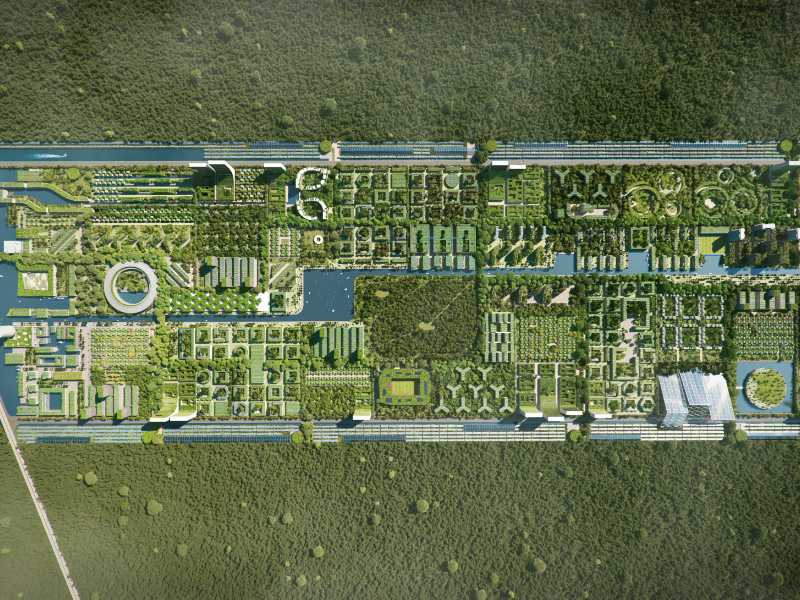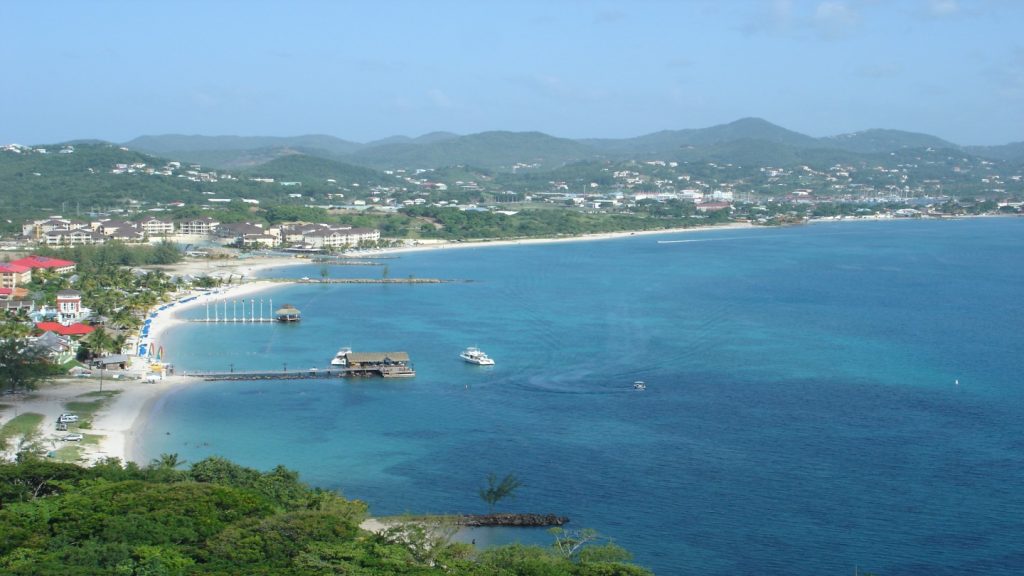
The Smart Forest City near Cancun, Mexico, is a city masterplan with a difference. Called the ‘first forest city of the new millennium’, it is a contemporary city-cum botanical garden, which, as well as hosting 130,000 inhabitants, will contain a staggering 7.5 million plants. From an energy perspective, it will be entirely self-sufficient.
“Smart Forest City Cancun is based on Mayan heritage in its relationship with the natural and sacred world,” said Stefano Boeri Architetti, the studio responsible, when plans were unveiled in October. “An urban ecosystem where nature and city are intertwined and act as one organism.”
It’s certainly a change from the original plan for the site – namely to build a gigantic shopping mall. Situated on a 557ha site, which was previously occupied by a sand quarry, the proposed city includes 400ha of green space. The upshot is that it’s carbon negative, absorbing 116,000t of CO₂ each year while emitting just 5,800t.
The Urban Forestry manifesto
The plan ties in with Boeri’s Urban Forestry manifesto, which holds that global action on urban forestry is an essential means of managing the climate crisis.
At present, cities consume 75% of the world’s natural resources and, despite taking up just 2% of the global land surface, are responsible for over 70% of global CO₂ emissions. Through planting more trees in urban spaces and creating new parks and turning city roofs into vegetable gardens, it may be possible to curb the damage. In essence, it’s about tasking these serial offenders with finding their own solutions.
In 2018, the studio helped organise the inaugural World Forum on Urban Forests (WFUF 2018) in Mantova, releasing a short film to coincide with the conference. As Francesca Cesa Bianchi, partner and project director, explains, it wasn’t long before they got a call from real estate developer Grupo Karim’s.
How well do you really know your competitors?
Access the most comprehensive Company Profiles on the market, powered by GlobalData. Save hours of research. Gain competitive edge.

Thank you!
Your download email will arrive shortly
Not ready to buy yet? Download a free sample
We are confident about the unique quality of our Company Profiles. However, we want you to make the most beneficial decision for your business, so we offer a free sample that you can download by submitting the below form
By GlobalData“The client, who wants to develop this smart city in Cancun, called us because he saw the video and got really interested in the idea of foresting old and new cities,” she says. “The video is a call to action – a way to involve cities and municipalities, the private and the public sector in the idea of fighting climate change through forestation. So we proposed a design for this new city following our criteria of forest sustainability.”
A circular economy
The city will contain 400 different plant species, chosen by botanist and landscape artist Laura Gatti. They will be dispersed throughout the city’s public parks and private gardens, as well as on the buildings in the form of green roofs and green facades.
Stefano Boeri Architetti has rich experience in this field, with a number of ‘vertical forests’ to its credit. The first of these was the Bosco Verticale in Milan – two verdant high rises housing 900 trees each, completed in 2014. Right now, work is underway on a raft of similar projects in China.
In the Forest City proposal, the studio partnered with German engineering company Transsolar to ensure the city fulfilled the principles of the circular economy. The built-up areas are surrounded by farmland, irrigated by a water channel. There are navigable canals throughout the settlement, which transport water from a huge basin at the city entrance.
There is also a series of ‘water gardens’, designed to boost the city’s resilience against flooding. In an age of rising sea levels, this is becoming something of a necessity for towns located near the coast.
“This city is big enough to be treated like a case study where we test different aspects of sustainability,” says Bianchi. “What I mean is that we tackled all the different elements in the most sustainable way – energy production and energy consumption, water supply and water management, waste management, mobility and then the general design of the city.”
To take just one example, standard cars won’t be allowed inside the city, with residents and visitors asked to leave their vehicles at the border. Under this articulated transport system, proposed by Mobility in Chain (MIC), visitors will need to rely on electric cars and public transport used internally.
Naturally, there will also be routes for pedestrians and cycling lanes with all services located within a reasonable walking distance of every resident.
“For the energy supply, our design has a buffer zone all around the perimeter where all the solar panels are placed,” says Bianchi. “So the idea is that this new city is self-sufficient in terms of food and energy.”
A template to follow
As well as being highly sustainable in its own right, the city will play host to a cluster of organisations and university departments, each tackling different environmental issues.
“Since we are treating this city like a prototype, where we test new technologies and experiment with new ideas about sustainability, we will include a centre for advanced research,” says Bianchi. “We propose to integrate five research centres, each one with different expertise, attracting international students and professors.”
While it’s still early days for the project, which is currently under evaluation from the Mexican state of Quintana Roo, the team are already thinking about the next steps.
“After we get approval, we hope to be able to develop the project further in terms of master planning,” says Bianchi. “For the design of the buildings, what we propose is to organise an international competition in order to involve young architects, and maybe local architects, mixing different languages and different expertise.”
However the Smart City progresses from here, the beauty of the design is that some of its ideas might well work elsewhere too. As existing cities look to expand their green infrastructure, there will be a growing demand for tried-and-tested solutions.
“What can be reproduced in other projects and actually what we’re doing in our own smaller projects is the idea of having a holistic approach,” says Bianchi. “It touches on all the aspects of a new city – not only the green elements but also the mobility, the infrastructure, the energy, the water. This approach could work, whatever the project.”




